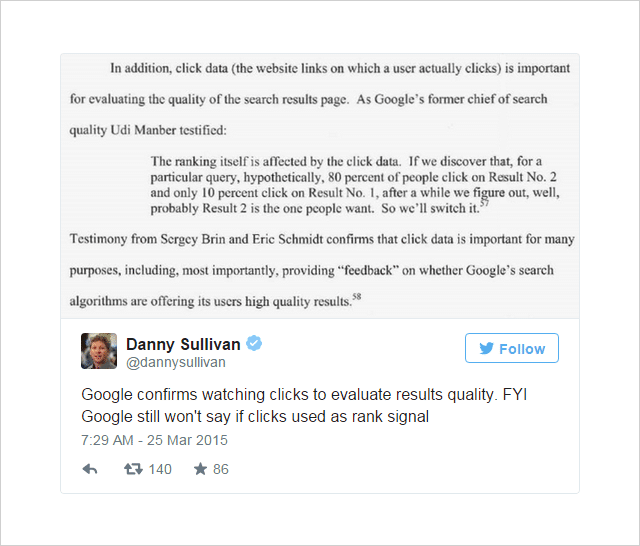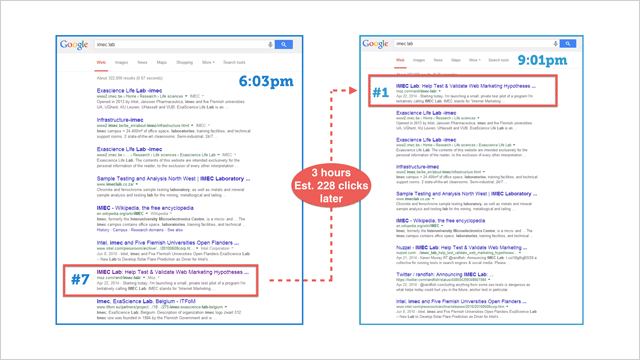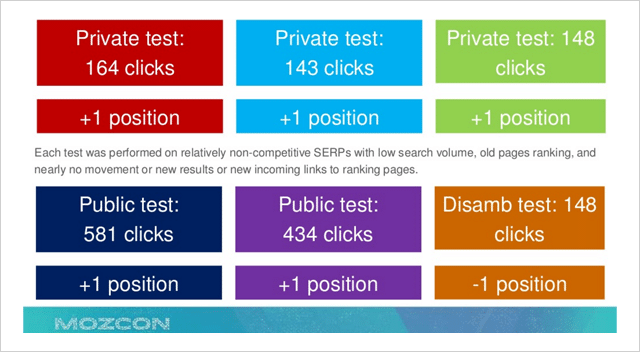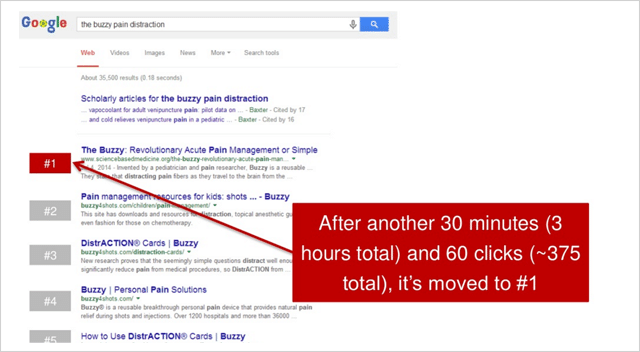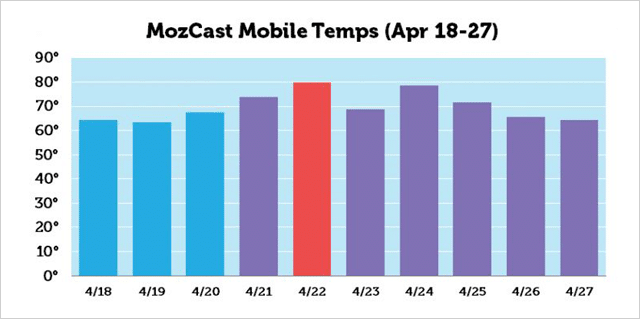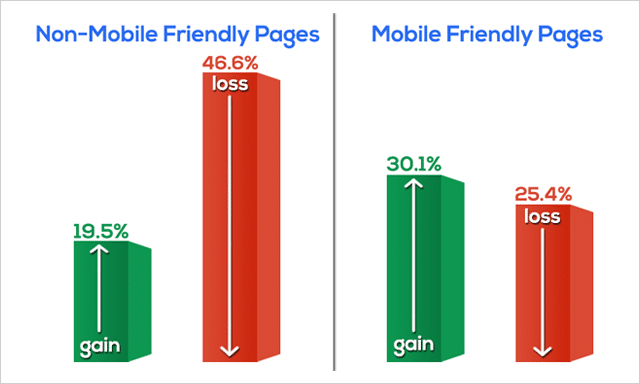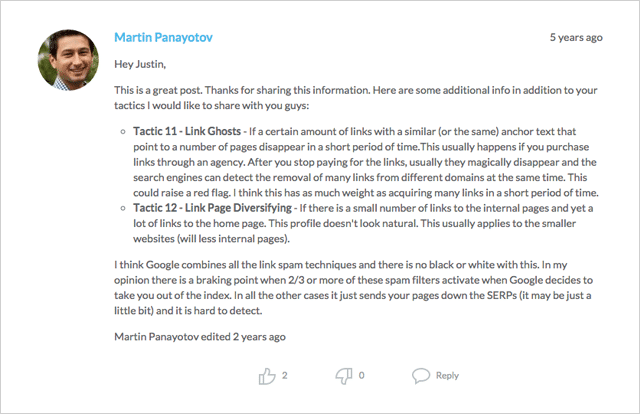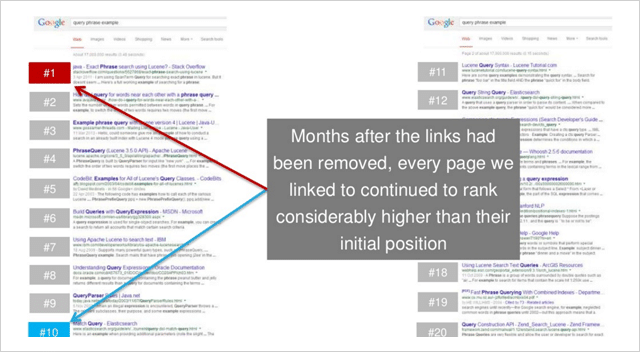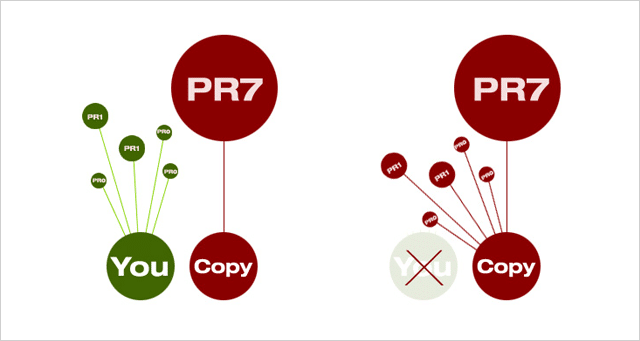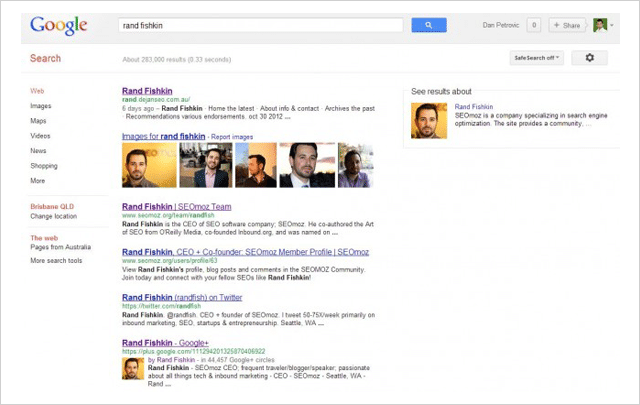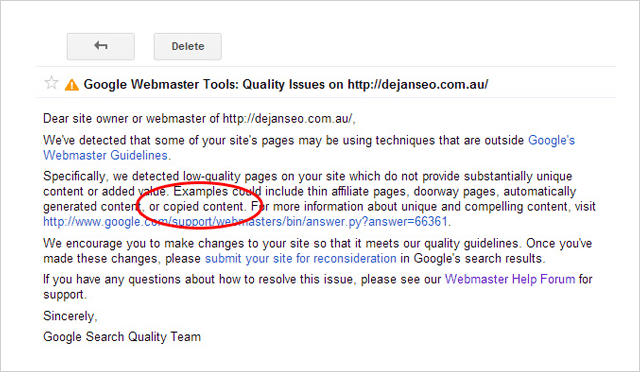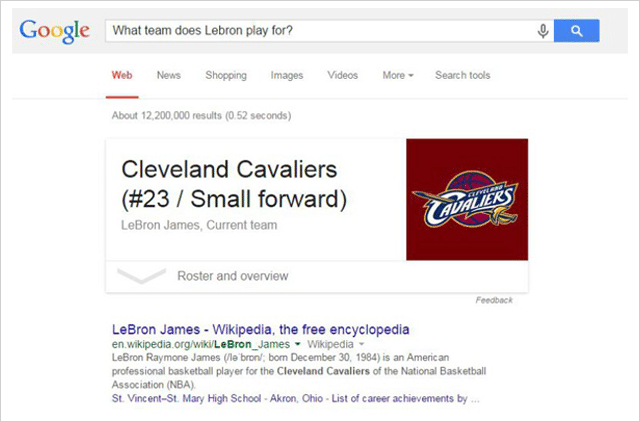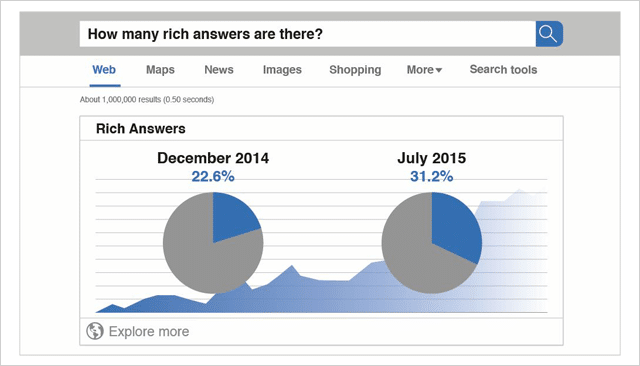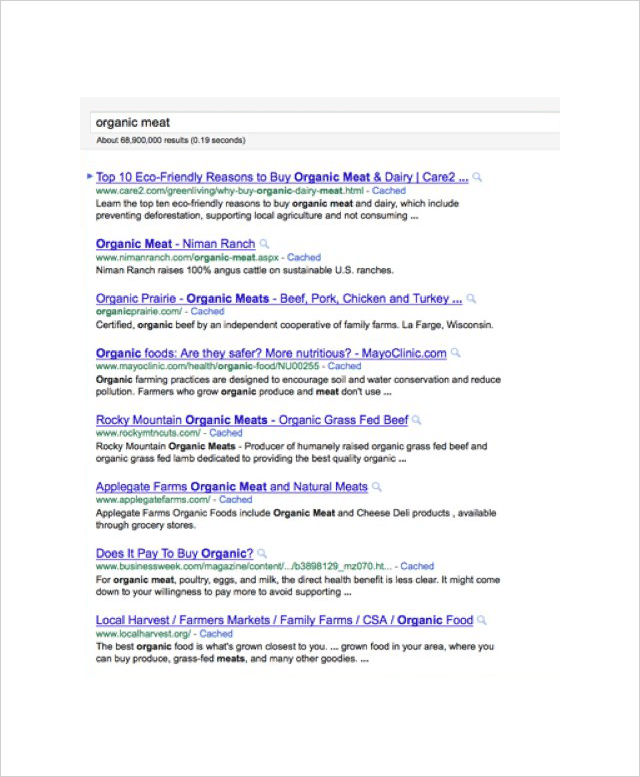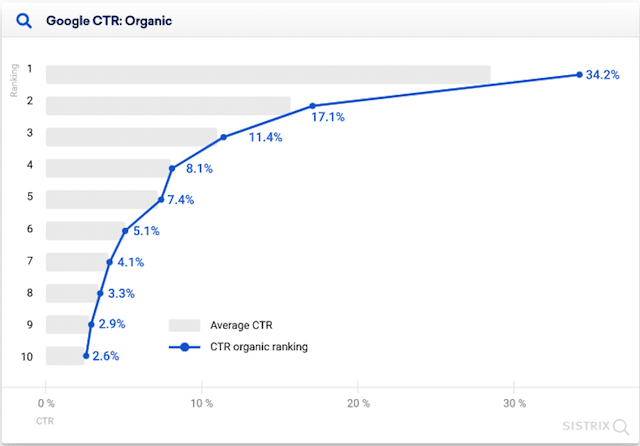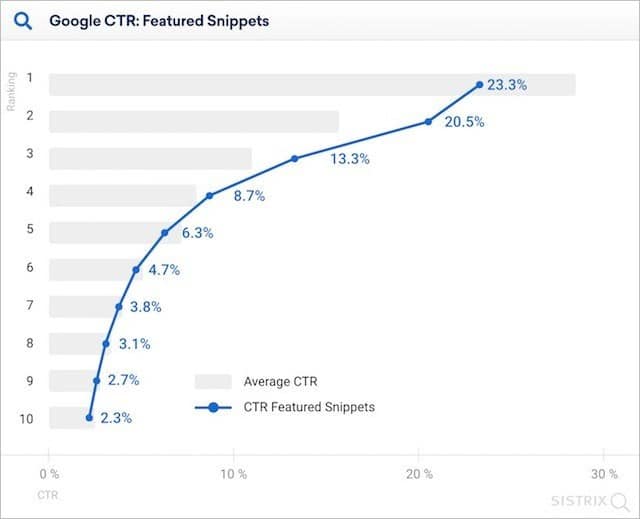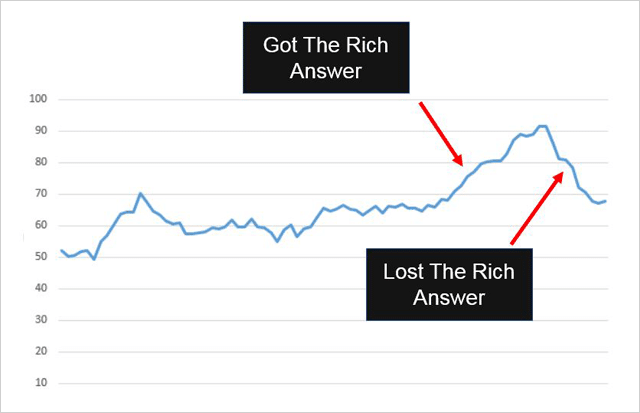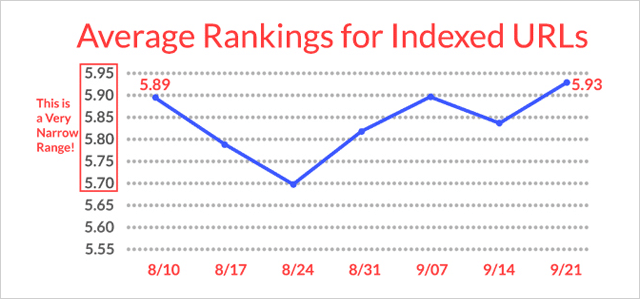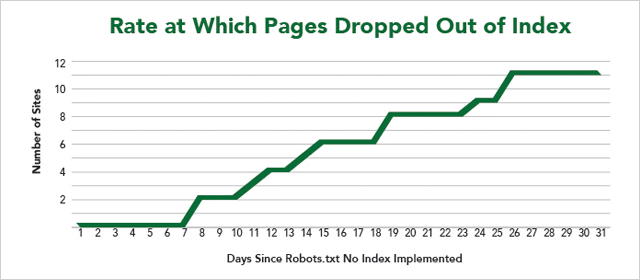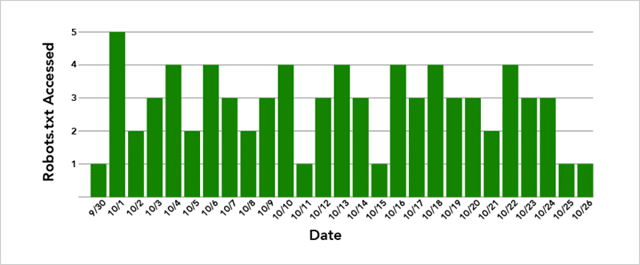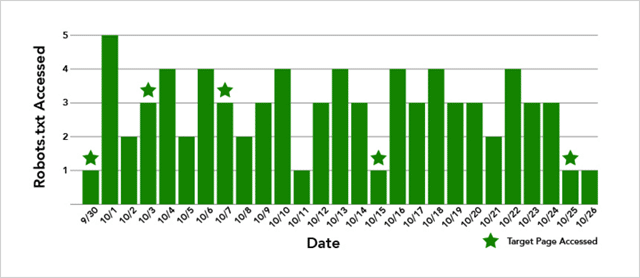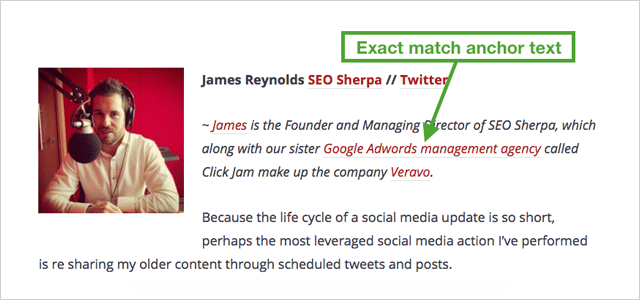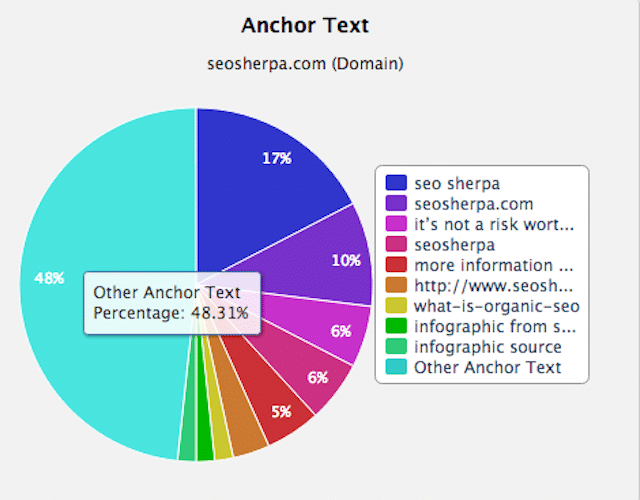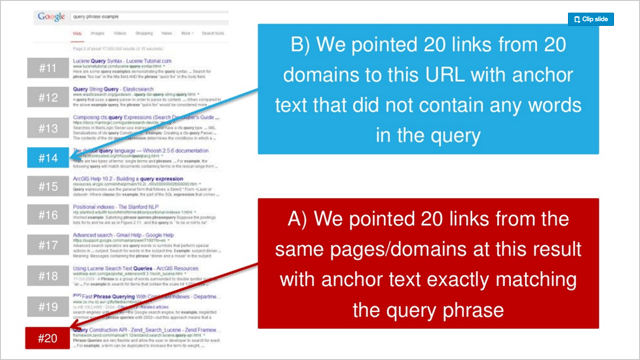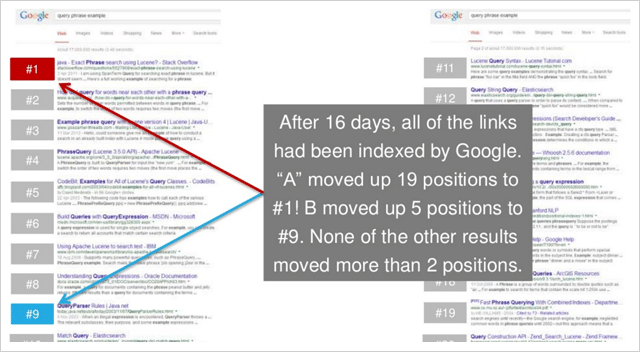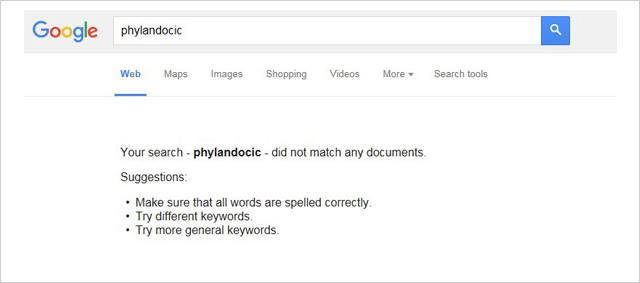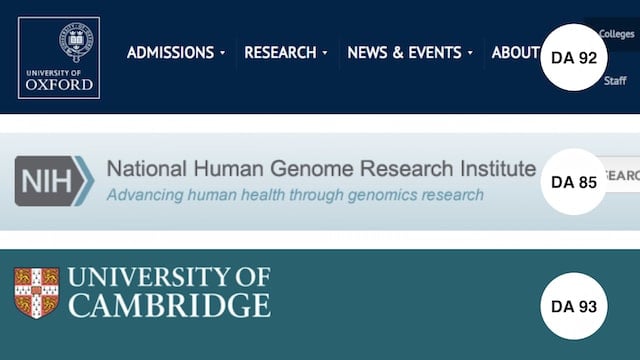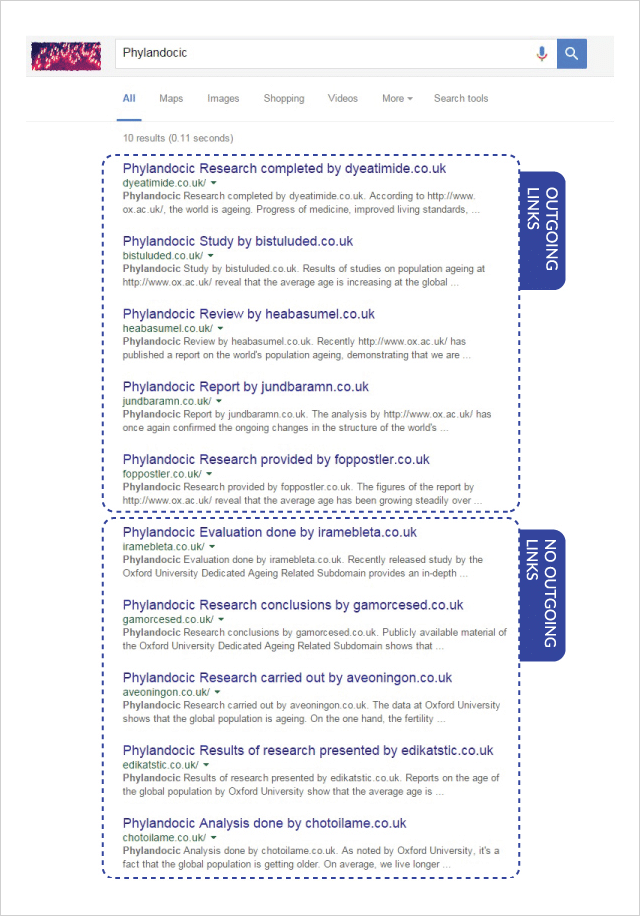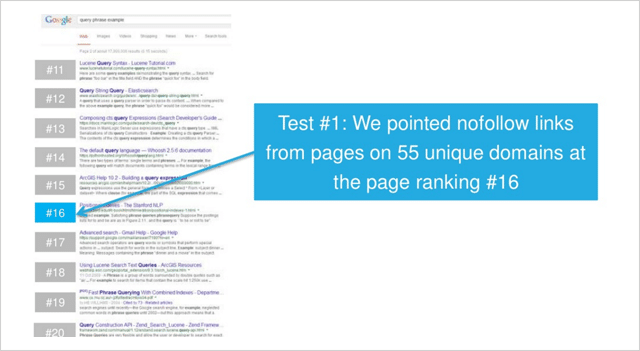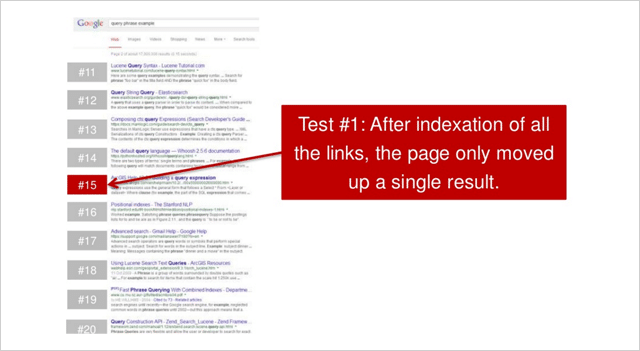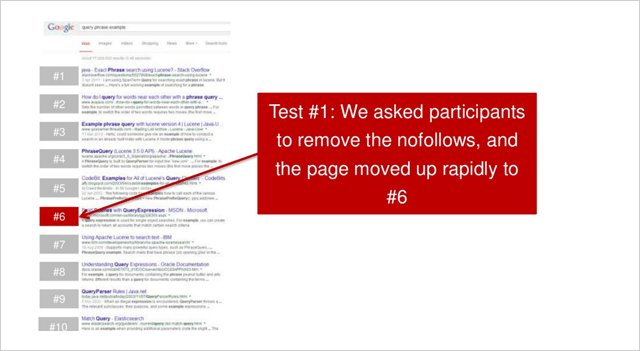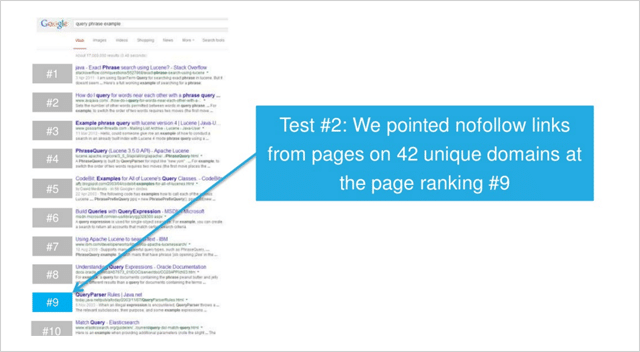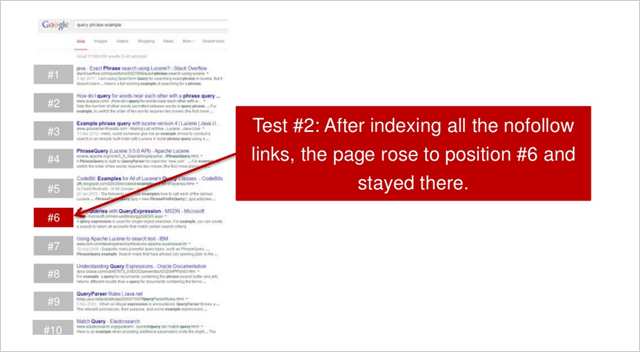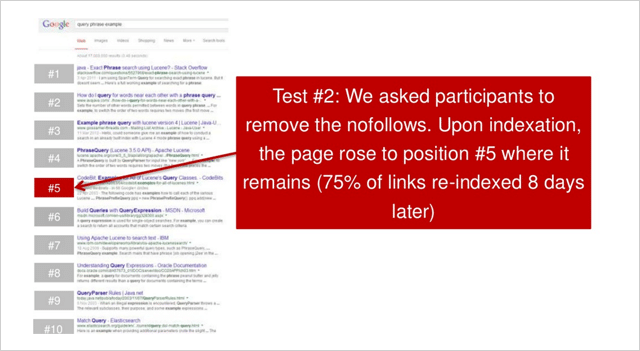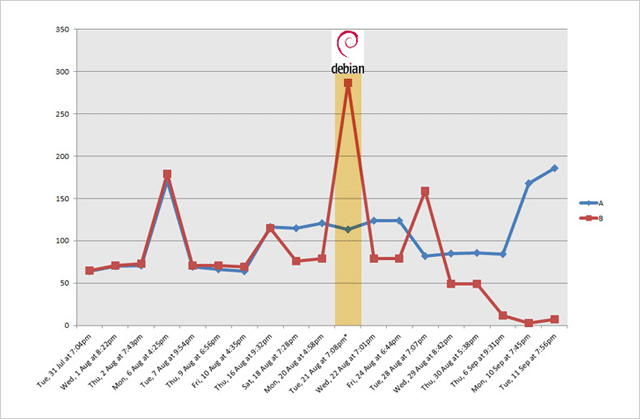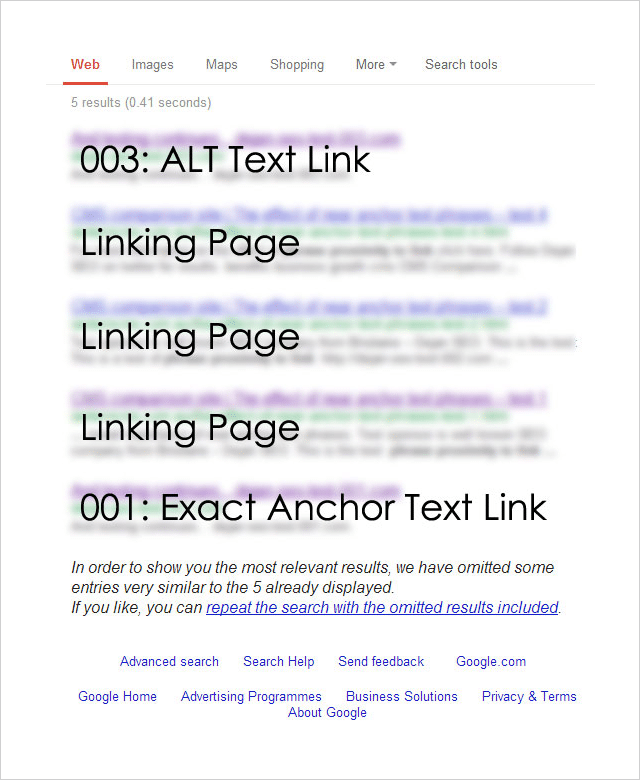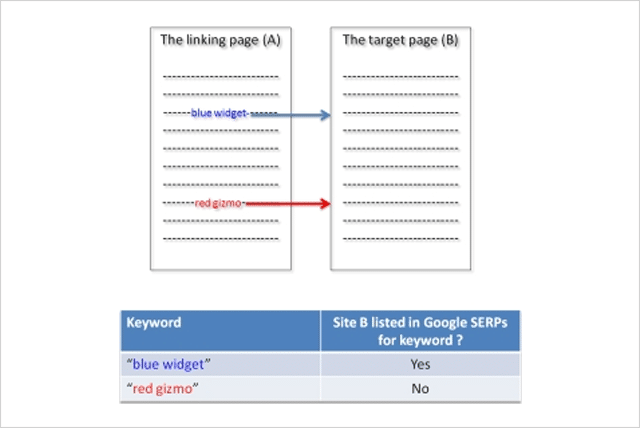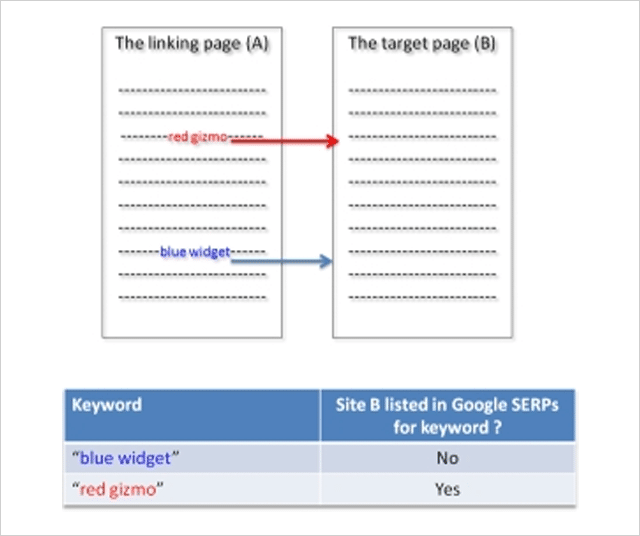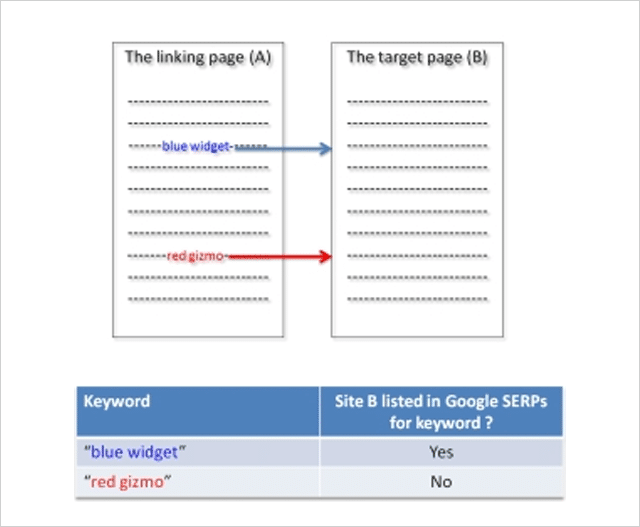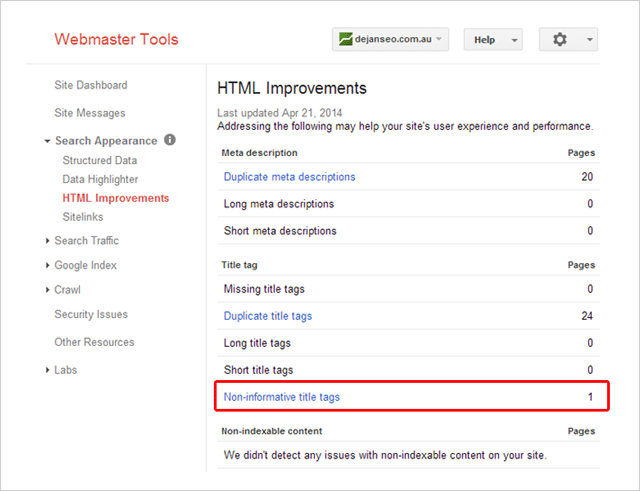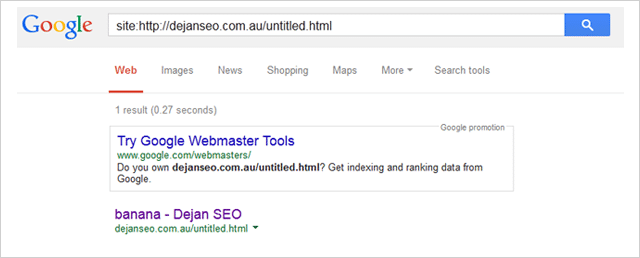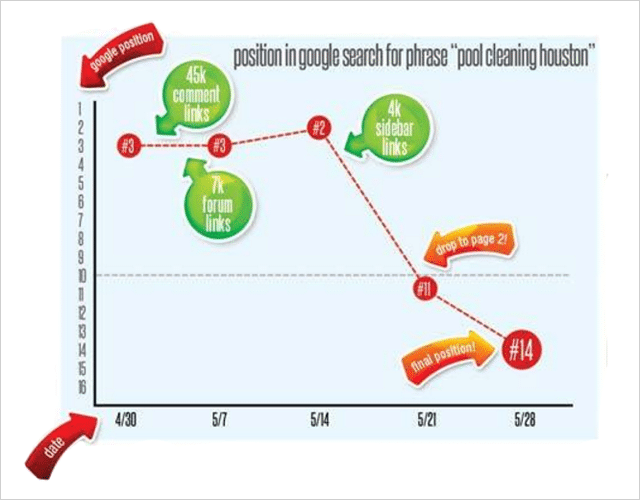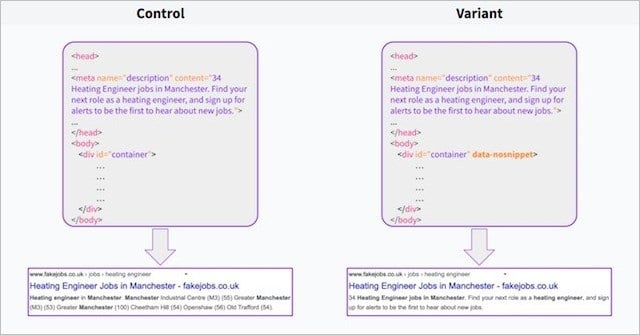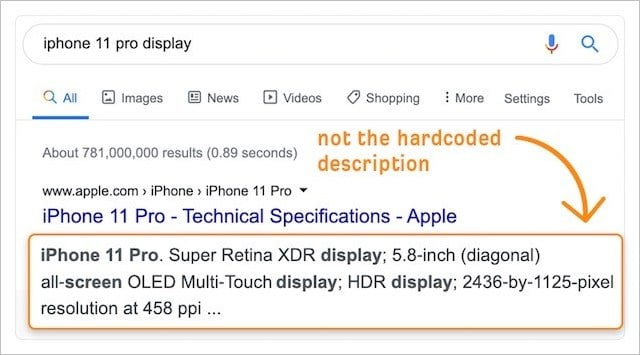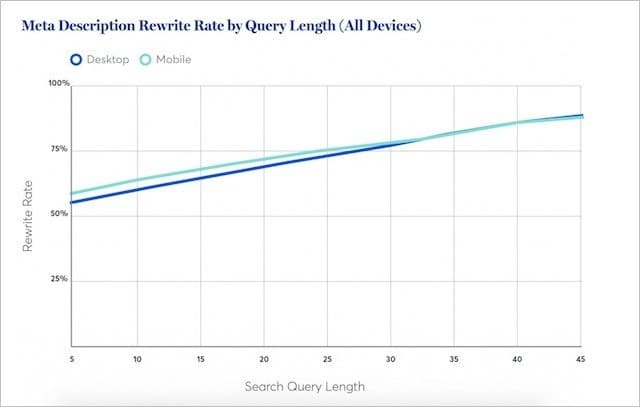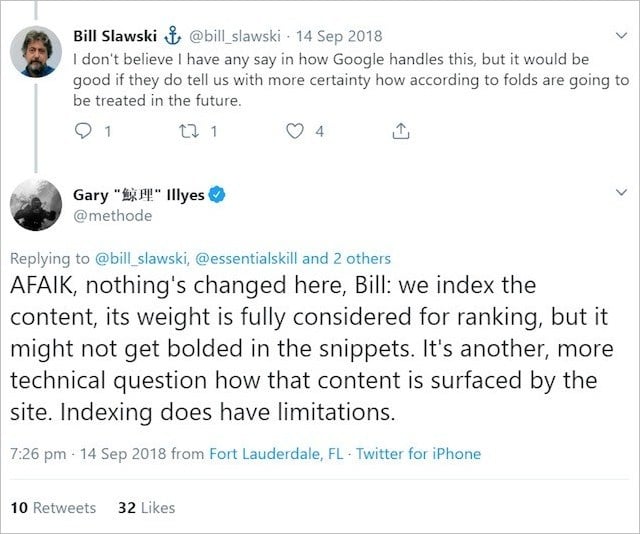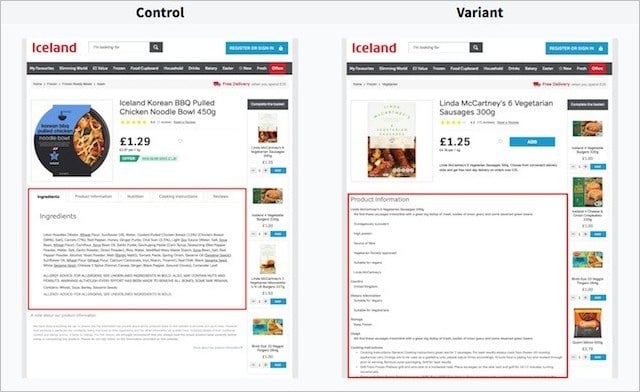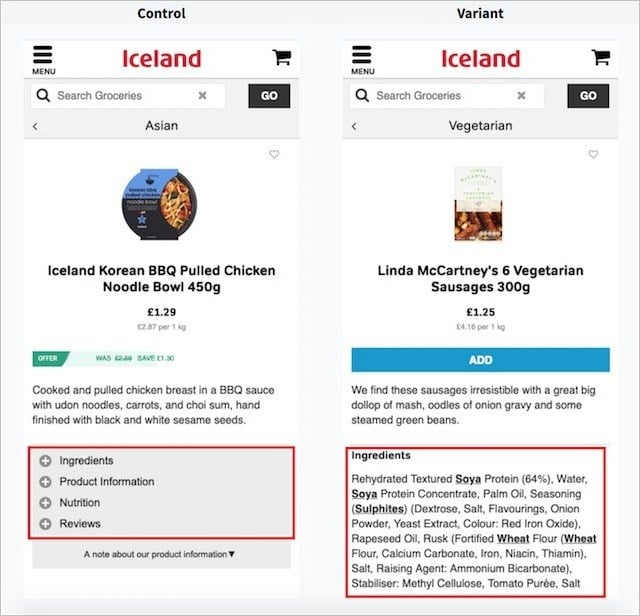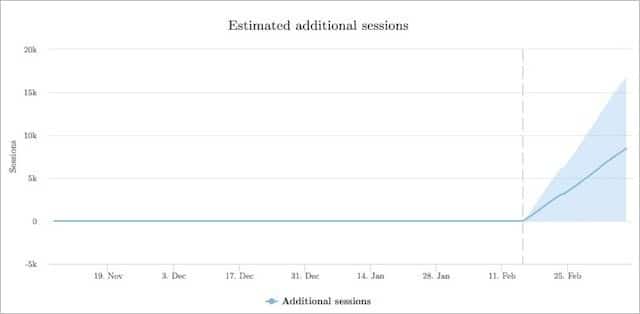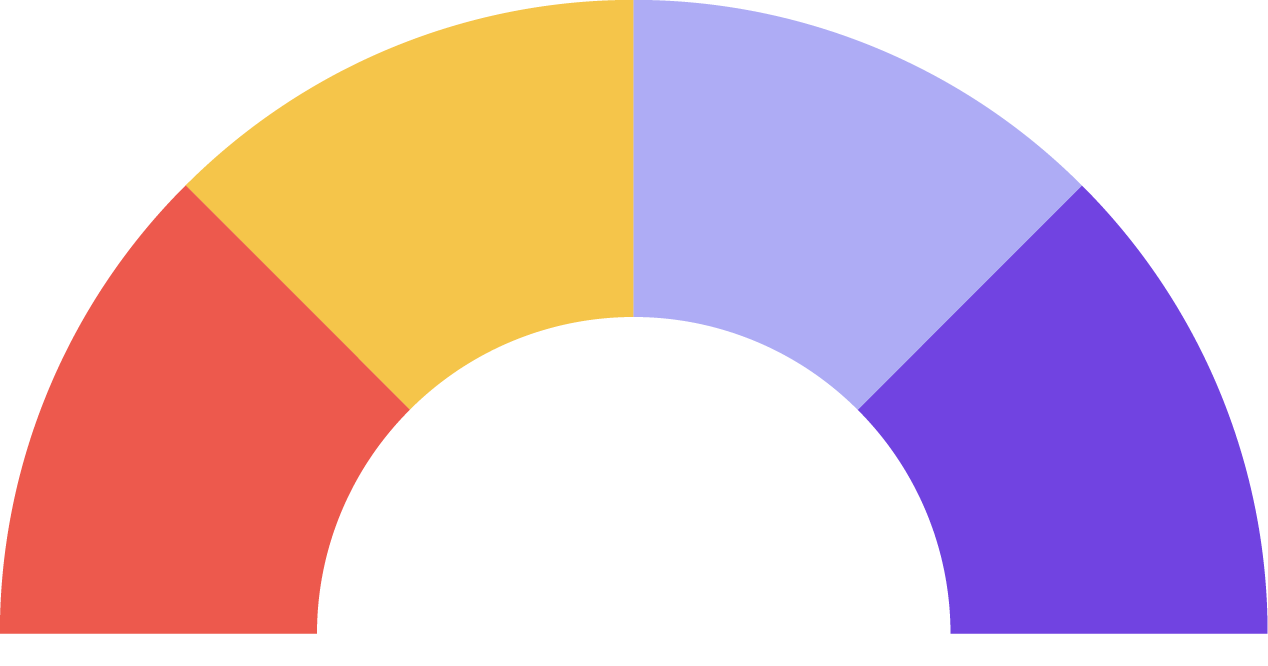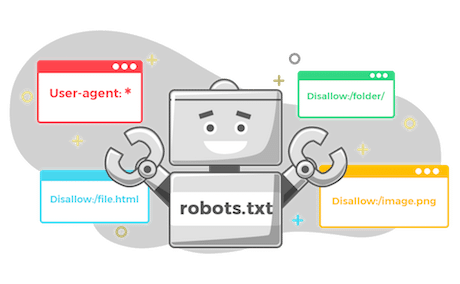
There are MORE misconceptions surrounding SEO…
…than almost any other aspect of digital marketing.
And, it’s hardly surprising when you consider there are more than 200 ranking factors, but almost all are shrouded in secrecy.
Since Google does not (and is never likely to) share the inner workings of their algorithm, how do you know what really works?
How do you decipher the SEO myths from the matter and the hearsay from the fact?
You turn to science, that’s what!
BONUS: Download every single SEO experiment contained in this post as a handy PDF guide you can print out or save to your computer.
In this post, I’m going to share with you 21 amazing SEO experiments (updated for the year 2021) that will challenge what you thought to be true about search engine optimization.
I’d even go as far as to predict these SEO studies will change the way you do SEO forever.
Are you ready? Because everything is about to change for you.
Okay, let’s jump in:
1. Click-Through-Rate Affects Organic Rankings (And How to Use That to Your Advantage)
This first experiment is a doozy.
For some time, there has been an opinion in the SEO world that Click-Through-Rate (CTR) may influence search ranking.
Fuelling the opinion were some strong (though not conclusive) clues from inside Google:
And, the Searchmetrics Ranking Factors Studies have increasingly deemed CTR as one of the most important ranking factors.
(Based on correlation, not causation, mind)
The argument as Jamie Richards points out is that a website receiving a higher click-through rate than websites above it, may signal itself as a more relevant result and affect Google into moving it upwards in the SERPs.
The idea discussed by WordStream here is akin to the Quality Score assigned to Adwords ads – a factor determined in part by an ad’s relative click-through-rate versus the other ads around it.
This was the idea that Rand Fishkin of Moz set out to test in consecutive experiments.
Number One: Query and Click Volume Experiment
The testing scenario Rand Fishkin used was pretty simple.
- Get a bunch of people to search for a specific query on Google.
- Have those people click a particular result.
- Record changes in ranking to determine if the increased click volume on that result influences its position.
To get the ball rolling Rand sent out this Tweet to his 264k Twitter followers:
Care to help with a Google theory/test? Could you search for “IMEC Lab” in Google & click the link from my blog? I have a hunch.
— Rand Fishkin (@randfish) May 1, 2014
Based on Google Analytics data, Rand estimates that 175-250 people responded to his call-to-action and clicked on the IMEC result.
Here’s what happened:
The page shot up to the #1 position.
This clearly indicates (that in this particular case at least) that click-through-rate significantly influences rankings.
In an attempt to validate this data, what followed was a series of repeat tests which showed an overall upward trend when click volume to a particular result was increased.
Unfortunately, this time, the data was far less dramatic and conclusive.
Why could that be?
Rand was concerned that in response to his public post showing how clicks may influence Google’s results more directly than previously suspected, that Google may have tightened their criteria around this particular factor.
Still, he was not deterred…
Number Two: Query and Click Volume Experiment
Inspired by a bottle of Sullivans Cove Whiskey during a break in a World Cup match, Rand Fishkin sent out another tweet:
What should you do during that lull in the World Cup match? Help me run a test! Takes <30 seconds: http://t.co/PxXWNlVdTi
— Rand Fishkin (@randfish) July 13, 2014
The tweet pointed his followers to some basic instructions which asked participants to search “the buzzy pain distraction” then click the result for sciencebasedmedicine.org.
Here’s where the target website appeared before the start of the experiment:
Over the next 2.5 hour period following Rand’s initial tweet, a total of 375 participants clicked the result.
The effect was dramatic.
sciencebasedmedicine.org shot up from number ten to the number one spot on Google.
Eureka!
This miraculous event, in turn, set about-about a chain reaction…
Which ended in this celebratory moment for Rand:
So it appears that click volume (or relative click-through-rate) does impact search ranking. Whilst there are some people such as Bartosz Góralewicz who argue against this, I believe this to be true.
There are several reasons why Google would consider click-through-rate as a ranking signal aside from mainstream signals like content and links.
This Whiteboard Friday video provides an excellent explanation of why:
So the case is compelling, click-through-rate surely does affect Google’s search rankings.
A later study by Larry Kim seems to suggest that if you beat the expected click-through rate by 20 percent, you’ll move up in rank.
Great, that’s all well and good.
But, how do you use that information to your advantage?
Here are 4 action steps that will show you just that:
(1) Optimise your click-through rate – To do this, craft compelling Page Titles and Meta Descriptions for your pages that sell people on clicking your result over those above it.
(2) Build your brand – An established and recognizable brand will attract more clicks. If users know your brand (and hopefully like and trust it too) you’ll have more prominence in the SERPs.
(3) Optimize for long clicks – Don’t just optimize to get clicks, focus on keeping users on your site for a long time. If you get more clicks, but those users just return back to the results, any benefit you got from a greater CTR will be canceled out.
(4) Use genuine tactics – The effects of a sudden spike in CTR (just like Rand’s experiment) will only last a short time. When normal click-through-rates return so will your prior ranking position. Use items 1 and 2 for long-lasting results.
2. The Industry Got It Wrong. Mobilegeddon Was Huge
Mobilegeddon was the unofficial name given to Google’s mobile-friendly update in advance of its release on April, 21st 2015.
The update was expected to skyrocket the mobile search rankings for websites that are legible and usable on mobile devices.
It was anticipated to sink non-mobile-friendly websites.
Some people were even saying it would be a cataclysmic event larger than Google Penguin and Panda.
For months prior, webmasters scrambled to get their sites in order. As the day drew closer the scramble turned into panic when site owners realized their websites failed the Google mobile-friendly test.
So what did happen on 21st April 2015? Did millions of websites fall into the mobile search abyss?
According to most reports, not much at all happened.
Sure, there was a peak of activity around 22nd April according to MozCast, but ranking changes were nowhere near as big as most SEOs thought they would be.
The consensus from experts like this Search Engine Roundtable poll was that results were pretty much unchanged:
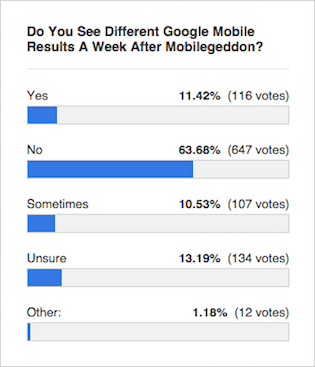
Enter Eric Enge and the Stone Temple Consulting team…
Mobilegeddon Ranking Study
On the week of April 17th, 2015 (pre-Mobilegeddon) Stone Temple pulled ranking data on the top 10 results for 15,235 search queries. They pulled data on the same 15,235 search queries again on the week of May 18th, 2015 (after Mobilegeddon).
They recorded ranking positions, and they also identified whether or not the URL slugs in the results were designated as Mobile Friendly by Google or not.
This is what they found:
The non-mobile friendly web pages lost rankings dramatically.
In fact, nearly 50% of all non-mobile friendly webpages dropped down the SERPs.
The mobile-friendly pages (overall) gained in their ranking.
The data that Eric and the team gathered in their Mobilegeddon test, clearly goes against the general opinion of the trade press.
Why did the press get it wrong?
It’s likely that because the algorithm update was rolled out slowly over time, it was not immediately obvious that such significant movements were taking place.
Also, there was a quality update released during the same period that may have muddied the effects of Mobilegeddon on search rankings.
So, let’s quickly wrap up on Mobilegeddon with three points;
- It was a big deal.
- If you’ve not ‘gone mobile’ yet, what are you waiting for?
- If you are unsure if your website is mobile-friendly or not, take this test.
3. Link Echoes: How Backlinks Work Even After They Are Removed
Credit where credit is due.
The idea of ‘link echoes’ (or ‘link ghosts’ as they’ve also been referred to) was first identified by Martin Panayotov and also Mike King from iPullRank in the comments on this post.
The idea is that Google will continue to track links and consider the value of those (positive or negative) even after the links are removed.
If this is the case, does a website that increased in rank after a link was added continue to rank after the link has been taken away?
Well, let’s see.
This particular experiment was performed by the team at Moz and was amongst a series that set out to test the effect of rich anchor text links (see SEO experiment number 8) on search rankings.
But, as so often holds true in science, the experiments brought about some entirely unexpected findings.
The Link Echo Effect
There were 2 websites in this experiment; Website A and Website B.
Before the test, this is how they ranked for the same (not very competitive keyword):
- Website A – position 31
- Website B – position 11
During the test, links were added to 22 pages on various websites pointing to both Website A and Website B.
Both websites, which received 22 links each, subsequently shot up the rankings:
- Website A moved from position 31 up to position 1 (an increase of +30 positions)
- Website B moved from position 11 up to position 5 (and increase of +6 positions)
In short, both websites increased in ranking considerably when links were added.
But what happened when those same links were removed?
Answer. Very little at all.
Website A stayed in the number 1 position.
Website B dropped down slightly to position 6 (a small drop of only 1 position)
This experiment validates the hypothesis.
It does appear that some value from links (perhaps a lot) do remain, even after the links are removed.
Could this experiment have been an isolated case?
Not according to Rand Fishkin:
“This effect of these link tests, remaining in place long after the link had been removed, happened in every single link test we ran, of which I counted eight where I feel highly confident that there were no confounding variables, feeling really good that we followed a process kind of just like this. The links pointed, the ranking rose. The links disappeared, the ranking stayed high.”
But, here’s what is so remarkable…
These higher rankings were not short-lived.
They remained for many months after the links were removed.
At the time of this video, the results had remained true for 4.5 months.
Furthermore…
“Not in one single test when the links were removed did rankings drop back to their original position,” says Rand Fiskin.
There are several lessons you can learn from this, but I’ll leave it at these two:
(1) Quality links are worth their weight in gold. Like a solid investment, backlinks will continue to give you a good return. The ‘echo’ of a vote once cast (as proven by this test) will provide benefit even when removed.
(2) The value of links DO remain for some time. So, before you get tempted into acquiring illegitimate links, consider if you’re ready to have that remain a footprint for months (or even years) ahead.
In short, spend your time focusing on building natural organic links.
Links can either work for you or against you. So, ensure it’s the former.
Short on link building strategies?
Check out this post which has dozens of ideas to get you started.
4. You Can Rank with Duplicate Content. Works Even on Competitive Keywords
Full disclosure, what I’m about to share with you may only work for a short while. But, for the time it does work, boy does it work like gangbusters.
First the theory.
When there are two identical documents on the web, Google will pick the one with a higher PageRank and use it in the search results.
It will also forward any links from any perceived ‘duplicate’ towards the selected ‘main’ document.
Why does it do this?
Unless there is a valid reason for two or more versions of the same content, only one need exist.
And, what does that mean for you?
It means that if you are creating unique and authoritative content (that attracts quality links and shares) you should come out top. Google will keep your version in the index and point all links aimed at the duplicates to your site.
The bad news (for the good guys at least), this is not always the case.
From time to time a larger, more authoritative site will overtake smaller websites’ in the SERPs for their own content.
This is what Dan Petrovic from Dejan SEO decided to test in his now-famous SERPs hijack experiment.
Using four separate webpages he tested whether the content could be ‘hijacked’ from the search results by copying it and placing it on a higher PageRank page – which would then replace the original in the SERPs.
Here’s what happened:
- In all four tests, the higher PR copycat page beat the original.
- In 3 out of 4 cases, the original page was removed from the SERPs.
His tests go to prove that a higher PageRank page will beat a lower PageRank page with the same content, even if the lower PR page is the original source.
And, even if the original page was created by the former Wizard of Moz himself, Rand Fishkin.
(Image: Rand Fishkin was outranked for his own name in Dan Petrovic’s experiment.)
So the question arises, what can you do to prevent your own content from being hijacked?
Whilst there is no guarantee that you can prevent your own hard-earned content from being copied then beaten, Dan offers the following measures which may help to defend you from content thieves:
(1) Add rel=”canonical” tag to your content using the full http:// text.
(2) Link to internal pages on your own website.
(3) Add Google Authorship markup.
(4) Check for duplicate content regularly using a tool like Copyscape.
Plagiarists Beware
Just because you can beat your competitors by stealing their content, it does not mean you should.
Not only is it unethical and downright shady to claim someone else’s content as your own, but plagiarism can also land you in trouble.
Shortly after running the experiment, Dejan SEO received a warning message inside their Google Search Console account.
The message cited the dejanseo.com.au domain as having low-quality pages, an example of which is ‘copied content.’ Around the same time, one of the copycat test pages also stopped showing in SERPs for some terms.
This forced Dan to remove the test pages in order to resolve the quality issue for his site.
So it seems that whilst you can beat your competitors with their own content, it’s definitely not a good idea to do so.
5. Number One Is NOT the ‘Top’ Spot (And What Is Now)
In this test, Eric Enge and the team at Stone Temple Consulting (now part of Perficient) set out to measure the change in the display of Rich Answers in Google’s search results.
Just in case you are unfamiliar with the terminology…
Rich Answers are the ‘in search’ responses to your queries you’ve probably been seeing more of in recent times. They aim to answer your query without you having to click through to a website.
The are many varieties of Rich Answers such as this one:
Or this carousel which displayed for me when I searched “times zones of australia”
There are literally dozens of variations, many of which are shared by Google here.
Stone Temple Consulting Rich Answers Study
The baseline data for this study was gathered in December of 2014.
In total 855,243 queries were analyzed.
Of the total queries measured at that time, 22.6% displayed Rich Answers.
Later in July of 2015, the same 855,243 queries were analyzed again.
At that time (just 7 months later) the total percentage of queries displaying Rich Answers had risen to 31.2%.
Because Stone Temple Consulting’s study measured the exact same 855,243 queries, the comparison between these two sets of data is a strict apple to apple comparison.
The data is clear.
Rich Answers are on the rise and the results you see today are a far cry from the ten blue links of the past.
(Source: Quicksprout)
The Changing View in Search Results
When the search engine results pages were just a list of websites ordered according to their relevancy to a query, it was clear why website owners would do anything they could to gain the top spot.
The higher up the ranks, the more clicks you got.
According to this study by Erez Barak at Optify, in 2011 the top ranking website would receive as much as 37% of total clicks.
Even as recent as 2020, Sistrix reported in their research that top-ranking sites (where no featured snippets are displayed) generate more than double the number of clicks compared to second-placed websites.
But, with the growth of Rich Answers, that’s all changing.
The ‘number one’ organic result is being pushed further and further down the page. Click volumes for the ‘top spot’ are falling.
But just how much are Rich Answers affecting click-through-rates?
The short answer is a lot.
In their 2020 study, Sistrix determined that in the presence of a featured snippet, the number one ranking web result got 23.3% of clicks.
That’s eleven percent less than when there’s no featured snippet.
It is clear to see how the inclusion (and removal) of a rich snippet answer in the SERPs can affect overall search traffic to a website.
Here’s one example:
Confluent Forms got a Rich Snippet result listed on their website and this is what happened to their traffic:
It went up once the Rich Answer was added.
It went down when the Rich Answer was removed.
And, remember this…
Rich Answers are intended to solve queries from within the search results. Yet, they can still send additional traffic to your site, just as they did for Confluent Forms.
How To Use Rich Answers to Your Advantage
Rich Answers are generally provided for question-based search queries.
And, according to Eric Enge (who successfully got a Rich Answer listed for his own website) answering questions is the best way to go about it.
If you want to benefit from Rich Answers (and who wouldn’t) then I suggest you take heed of his advice:
(1) Identify a simple question – Make sure the question is on topic. You can check this by using a Relevancy tool such as nTopic.
(2) Provide a direct answer – Ensure that your answer is simple, clear, and useful for both users and search engines.
(3) Offer value-added info – Aside from your concise response to the question, include more detail and value. Be sure not to just re-quote Wikipedia since that’ll not get you very far.
(4) Make it easy for users and Google to find – This could mean sharing it with your social media followers or linking to it from your own or third party websites.
6. Using HTTPS May Actually Harm Your Ranking
Make your website secure or else.
That was the message Google laid out in this blog post when they stated HTTPS as a ranking signal.
And it would make sense right?
Websites using HTTPS are more secure. Google wants the sites people to access from the search engine to be safe. Sites using HTTPS should receive a ranking boost.
But here’s the thing. They don’t.
(That’s if the study by Stone Temple Consulting and seoClarity is anything to go by.)
The HTTPS study tracked rankings across 50,000 keyword searches and 218,000 domains. They monitored those rankings over time and observed which URLs in the SERPs changed from HTTP to HTTPS.
Of the 218,000 domains being tracked, just 630 (0.3%) of them made the switch to HTTPS.
Here’s what happened to the HTTPS websites:
They actually lost ranking.
Later they recovered (slowly) to pretty much where they started.
Hardly a reason to jump on the HTTPS bandwagon.
It appears that HTTPS (despite Google wanting to make it standard everywhere on the web) has no significant ranking benefit for now and may actually harm your rankings in the short term.
My advice: Stay using HTTP unless you really need to change.
7. Robots.txt NoIndex Doesn’t (Always) Work
In another experiment out of the IMEC Lab, 12 websites offered up their pages in order to test whether using Robots.txt NoIndex successfully blocks search engines from crawling AND indexing a page.
First the technical stuff.
How to Stop Search Engines Indexing Your Web Page
The common approach adopted by Webmasters is to add a NoIndex directive inside the Robots Metatag on a page. When the search engine spiders crawl that page, they identify the NoIndex directive in the header of the page and remove the page from the Index.
In short, they crawl the page then stop it from showing in the search results.
The code looks like this:
On the other hand, the NoIndex directive placed inside the Robots.txt file of a website will both stop the page from being indexed and stop the page from being crawled.
Or at least it should…
As you can see from the results, not all web pages were removed from the index.
Bad news if you want to hide your site’s content from prying eyes.
What’s more, Google did not remove any of the pages immediately despite the website’s Robots.txt files being crawled several times per day.
And, if you think that’s because Google needs to attempt a crawl of the page itself too, that’s not true either.
In the case of the website that did not get its page removed from the Index, the target page was crawled 5 times:
So what’s at play here?
Well, the results are inconclusive.
But, what we can be sure to say is that (despite Google showing support of Robots.txt NoIndex) it’s slow to work, and sometimes doesn’t work at all.
My advice: Use Robots.txt NoIndex with caution.
8. Exact Match Anchor Text Links Trump Non-Anchor Match Links
If you’ve read a thing or two about SEO, you’ll have learned that exact match anchor text is bad.
Too many links saying the same thing are unnatural.
And could land you with a penalty.
Ever since Google Penguin was released to put a stop to manipulative link building, the advice from experts has been to “keep anchor text ratios low.”
In simple terms that means, you want a mix of links to your site so that no one keyword-rich anchor text makes up more than a small percentage of the total.
Raw links like this: http//yourdomain.com, as well as generic links like “your brand name,” “click here” and “visit this website” are all good.
More than a small percentage of keyword-rich links is bad.
A varied and natural link profile will look something like mine:
As you can see, the majority of links are for my brand name. The rest are mostly other anchor text.
With that in mind.
What happens when you point 20 links to a website all with the same keyword-rich anchor text?
Your rankings skyrocket, that’s what!
In a series of three experiments, Rand Fishkin tested pointing 20 generic anchor links to a webpage versus 20 exact match anchor text links.
In each case, the exact match anchor text increased the ranking of the target pages significantly.
And, in 2 out of 3 tests the exact match anchor text websites capitulated the generic anchor text websites in the results.
Here’s the before rankings from test 2 in Rand’s series:
And here are the rankings after:
That’s pretty damned conclusive.
Exact match anchor text is considerably more powerful than non-anchor match links.
(And surprisingly powerful overall)
9. Link to Other Websites to Lift Your Rankings
Outbound links dilute your site’s authority.
This has been the generally conceived notion in the world of SEO for some time.
And this despite Google saying that linking to related resources is good practice.
So why are SEOs so against outbound links?
The idea is that outbound links lose you PageRank. The more outbound links, the more PageRank you give away.
And since losing PageRank means losing authority, the outcome of linking out is lower rankings. Right
Well, let’s find out.
Shai Aharony and the team at Reboot put this notion to the test in their outgoing links experiment.
For the experiment Shai setup ten websites, all with similar domain formats and structure.
Each website contained a unique 300-word article which was optimized for a made-up word “phylandocic”
Prior to the test the word “phylandocic” showed zero results in Google.
In order to test the effect of outbound links, 3 full follow links were added to 5 of the 10 domains.
The links pointed to highly trusted websites:
- Oxford University (DA 92)
- Genome Research Institute (DA 85)
- Cambridge University (DA 93)
Once all the test websites were indexed, rankings were recorded.
Here’re the results:
They are as clear as night and day.
EVERY single website with outbound links outranked those without.
This means your action step is simple.
Each time you post an article to your site, make sure it includes a handful of links to relevant and trustworthy resources.
As Reboot’s experiment proved. It will serve your readers AND your rankings.
10. Amazing Discovery That Nofollow Links Actually Increase Your Ranking
Another experiment from the IMEC Lab was conducted to answer:
Do no-followed links have any direct impact on rankings?
Since the purpose of using a “no follow” link is to stop authority being passed, you would expect no-follow links to have no (direct) SEO value.
This experiment proves different.
In the first of two tests, IMEC Lab participants pointed links from pages on 55 unique domains at a page ranking #16.
After all of the no-follow links were indexed, the page moved up very slightly for the competitive low search volume query being measured.
Participants were then asked to remove the no-follow links which resulted in this:
The page moved up quickly to the number 6 position.
An accumulative increase of 10 positions, just from some no-follow links.
Not bad.
Could this be repeated?
In a second test, this time for a low-competition query, no-follow links were added to pages on 42 unique domains.
(Note – all links were in page text links. No header, footer, sidebar, widget links (or the like) were used in either test.)
After all the links got indexed the page climbed to the number 6 position.
An increase of 3 positions.
Then participants were asked to remove all no-follow links. The website then rose one position to number 5.
In both tests; when no-follow links were acquired the websites improved their rankings significantly
The first website increased 10 positions.
The second website increased 4 positions.
So yet another SEO theory debunked?
Rand Fishkin points out that the test should be repeated several more times to be conclusive.
“My takeaway. The test should be repeated 2-3 times more at least, but early data suggests that there seems to be a relationship between ranking increases and in-content, no followed links” says Rand.
Well regardless, as Nicole Kohler points out there is certainly a case for no-follow links.
Links beget links.
And (according to this study) no-follow or full follow. They are BOTH of value to you.
11. Fact: Links from Webpages with Thousands of Links Do Work
There is a belief in SEO that links from webpages with many outgoing links are not really worth much.
The theory here is that with many outbound links, the ‘link juice” AKA PageRank from the linking web page is spread so thinly that the value of one link to your site cannot amount to much.
The more outbound links that the website has, the less value passed to your site.
This theory is reinforced by the notion that directories and other lower-quality sites that have many outbound links should not provide significant ranking benefit to sites they link to. In turn, links from web pages with few outbound links are more valuable.
This is exactly what Dan Petrovic put to the test in his PageRank Split Experiment.
The PageRank Split Test
In his experiment, Dan set up 2 domains (A and B).
Both domains were .com and both had similar characteristics and similar but unique content.
The only real difference was that during the test Website B was linked to from a site that is linked to from a sub-page on http://www.debian.org (PR 7) which has 4,225 external followed links.
The aim of the test was simply to see if any degree of PageRank is passed when so many outbound links exist, and what effect (if any) that has on the ranking of websites it links to.
If the belief of most SEOs is anything to go by, not much should have happened.
Here’s what did happen…
Immediately after Website B was linked to from the PR 7 debian.org (via the bridge website) Website B shot up in rankings, eventually reaching position 2.
And, as per Dan’s most recent update (3 months after the test) website B maintained its position, only held off the top spot by a significantly more authoritative PageRank 4 page.
Website A (which had not been linked to) remained a steady position for a while, then dropped in ranking.
So it appears that links from pages that have many outbound links are in fact extremely valuable.
What myth can our list of SEO experiments dispel next…
12. Image Links Work (Really) Well
Like many of the SEO experiments on this list, this one came about because one dude had a hunch.
Dan Petrovic’s idea was that the text surrounding a link plays a semantic role in Google’s search algorithm.
But, Dan was never able to ascertain the degree of its influence or whether it has any impact at all.
So he set up this test to find out…
Anchor Text Proximity Experiment
The experiment was designed to test the impact of various link types (and their context) on search rankings.
To conduct the test Dan registered 4 almost identical domain names:
http://********001.com.au
http://********002.com.au
http://********003.com.au
http://********004.com.au
Each of the 4 domains was then linked to from a separate page on a well-established website. Each page targeted the same exact phrase but had a different link type pointing to it:
001: [exact phrase]
Used the exact target keyword phrase in the anchor text of the link.
002: Surrounding text followed by the [exact phrase]: http://********002.com.au
Exact target keyword phrase inside a relevant sentence immediately followed by a raw http:// link to the target page.
003: Image link with an ALT as [exact phrase]
An image linking to the target page that used the exact target keyword phrase as the ALT text for the image.
004: Some surrounding text with [exact phrase] near the link which says click here.
This variation used the junk anchor text link “click here” and the exact target keyword phrase near to the link.
So which link type had the greatest effect on rankings?
Here are the results:
Unsurprisingly, the exact match anchor text link worked well.
But most surprisingly, the ALT text-based image link worked best.
And, what about the other two link types?
The junk link (“click here”) and the raw link (“http//”) results did not show up at all.
The Anchor Text Lessons You Can Take Away From This
This is just one isolated experiment, but it’s obvious that image links work really well.
Consider creating SEO-optimized image assets that you can utilize to generate backlinks.
The team at Ahrefs put together a useful post about image asset link building here.
But don’t leave it at that, best results will come from a varied and natural backlink profile.
Check out this post from Brian Dean which provides 17 untapped backlink sources for you to try.
13. Press Release Links Work. Matt Cutts Take Note
Towards the end of 2014, Google’s head of webspam publicly denounced press release links as holding no SEO value.
“Note: I wouldn’t expect links from press release web sites to benefit your rankings” – Said Matt Cutts.
In an ironic (and brilliant) move, SEO Consult put Cutt’s claim to the test this by issuing a press release which linked to, of all places….
Matt Cutts blog:
The anchor text used in the was the term “Sreppleasers”
The term is not present anywhere on Cutts’s website.
Yet still, when you search “Sreppleasers” guess who’s website comes up top?
There has been a lot of discussion about whether Press Release links work.
Is the jury still out on this?
I’ll let you decide.
14. First Link Bias. Proven
First, let me say this…
This experiment is a few years old so things may now have changed. However, the results are so interesting it’s very worthy of inclusion.
The theory for this experiment began with a post by Rand Fishkin which claimed that Google only counts one link to a URL from any given page.
Shortly after that post was published Rand’s claims were debunked by David Eaves.
The opinion was rife in the SEO world as to whether either experiment was sound.
So, SEO Scientist set out to solve the argument once and for all.
The Test
The hypothesis goes something like this…
If a website is linked to twice (or more) from the same page, only the first link will affect rankings.
In order to conduct the test SEO Scientist set up two websites (A and B).
Website A links to website B with two links using different anchor texts.
Test Variation 1
The websites were set up, then after the links got indexed by Google, the rankings of site B were checked for the two phrases.
Result: Site B ranked for the first phrase and not for the second phrase.
Here is what the results looked like:
Test Variation 2
Next, the position of links to site B was switched. Now the second phrase appears above the previously first phrase on site A and visa versa.
Once Google had indexed the change, rankings were again checked for website B.
Result: Site B disappeared from the SERPs for the new second phrase (previously first) and appears for the new first phrase (previously second).
Rankings switched when the order of the links switched!
Test Variation 3
To check this was not some anomaly, in the third test variation the sites were reverted back to their original state.
Once the sites were re-indexed by Google, the rankings of website B were checked again.
Result: Site B reappeared for the initially first phrase and disappeared again for the initially second phrase:
The test proved that Google only counts the first link.
But, it gets even more interesting.
In a follow-up experiment, SEO Scientist made the first link “no follow” and still the second link was not counted!
The lesson from this experiment is clear.
If you are “self-creating” links ensure that your first link is to your most important target page.
15. The Surprising Influence of Anchor Text on Page Titles
Optimizing your Title tags has always been considered an important SEO activity and rightly so.
Numerous SEO studies have identified the title tag as a genuine ranking factor.
Since it’s also what normally gets shown in the search results when Google lists your website, spending time on crafting well-optimized title tags is a good use of your time.
But, what if you don’t bother?
A few years ago Dejan SEO set out to test what factors Google considers when creating a document title when a title tag is not present.
They tested several factors including domain name, the header tag, and URLs – all of which did influence the document title shown in search results.
What about anchor text? Could that influence the title shown?
In this video Matt Cutts suggested it could:
But, wanting some real evidence Dan Petrovic put it to the test in this follow-up experiment.
His experiment involved several participants linking to a page on his website using the anchor text “banana”.
The page being linked to had the non-informative title “Untitled Document”.
Here it is listed inside Dan’s Search Console account:
During the test Dan monitored three search queries:
- http://goo.gl/8uPrz0
- http://goo.gl/UzBOQh
- http://goo.gl/yW2iGi
And, here’s the result:
The document title miraculously showed as “banana”.
The test goes to prove that anchor text can influence the document title shown by Google in search results.
Does that mean you should not write unique and compelling title tags for each page on your site?
I suggest not.
As Brian Dean points out, the title tag of your page may not be as important as it used to be, but it still counts.
16. Negative SEO: How You Can (But Shouldn’t) Harm Your Competitors Rankings
There is no questioning, negative SEO is possible.
In 2003 Google changed its stance from saying there is nothing a competitor can do to harm your ranking:
To saying there is almost nothing they can do:
Where Google is concerned, a small change like this is a pretty BIG deal.
So the question arises…
How easy is it to affect a site’s ranking (negatively)?
Tasty Placement conducted an experiment to determine just that.
The Negative SEO Experiments
In an attempt to harm search rankings Tasty Placement purchased a large number of spam links which they pointed at their target website Pool-Cleaning-Houston.com.
The site was relatively established and prior to the experiment, it ranked well for several keyword terms including “pool cleaning houston” and other similar terms.
A total of 52 keyword’s positions were tracked during the experiment.
The Link Spam
They bought a variety of junk links for the experiment at a very low cost:
45,000 Comment links. Anchor text “Pool Cleaning Houston.” Cost: $15
7000 double-tiered forum profile links. Anchor text “Pool Cleaning Houston.” Cost: $5
Sidebar blog links on four trashy blogs, yielding nearly 4000 links. Anchor text “Pool Cleaning Houston.” Cost: $20
Total cost?
A whopping 40 bucks.
Over the course of 2 weeks, the cheap junk links were pointed at Pool-Cleaning-Houston.com
First the comment links, then the forum profile links, and finally the sidebar links.
Here’s what happened to the rankings for “pool cleaning houston”
The batch of comment links had no effect at all.
7 days later the forum post links were placed, which was followed by a surprising increase in the site’s ranking from position 3 to position 2. Not what was expected at all.
Another 7 days after that the sidebar links were added.
The result…
Kaboom!
An almost instant plummet down the rankings.
Aside from the main keyword, a further 26 keywords also moved down noticeably.
So it seems it’s pretty easy (and cheap) to destroy a competitor’s rankings if you were so inclined, which I know you are not!
Whilst Tasty Placement’s experiment leaves some questions as to the true cause of the ranking drop (repetitive anchor text or links from a bad neighborhood perhaps?) it does make it clear that negative SEO is real.
And, really easy to do.
17. Does Google Write Better Descriptions than You?
If you’ve been in SEO for any amount of time, you’ve probably written hundreds if not thousands of meta descriptions.
But, you’re cool with that.
Those countless hours of meta description writing are time well spent.
With the growing importance of click-through-rate on rankings (see experiment number 2), any improvements made to your website’s SERP snippets via custom (hardcoded) descriptions will surely lift up results.
After all, we know our business and audience best.
Which means, our descriptions have got to out-perform Google’s auto-generated versions, right?
Unfortunately, not.
In a recent experiment, the team at Search Pilot found that (in their case at least) Google’s auto-generated descriptions outperformed custom meta descriptions by a factor of 3%.
Using the data-no snippet attribute on the body element of half their pages, Search Pilot was able to split-test Google generated descriptions (the control) against their own custom descriptions (the variant).
Very soon after the test began, click-through trended downwards, and within two weeks, the test had hit statistical significance for a negative result!
In short, Google’s descriptions performed better.
What can you take from this?
Google has access to a helluva lot of user data.
This data advantage helps Google know what users are looking for, and create descriptions that are more relevant to users than those we might write ourselves – even if Google’s own descriptions are scraped and often read like junk.
This is reinforced by studies that have shown that Google ignores the meta description tag for 63% of queries.
We can assume Google does this when the meta description created by the website owner is not entirely relevant to the user’s query – and Google thinks it can do a better job.
Search Pilot’s study indicates they do.
Does that mean you should do away with meta description writing and leave it all to Google?
Not entirely.
Research by Portent suggests that Google rewrites meta descriptions less for short (normally high-volume) keywords.
In fact, for the shortest queries, Google will shop the actual meta description at least half the time.
This indicates that in around 50% of the searches, your meta description will be best.
My advice:
Continue to write custom-crafted meta descriptions for your most important content.
But do away with meta descriptions where the traffic potential for your content is lower.
Google will do a decent job of creating relevant descriptions – that are statistically proven to outperform yours.
18. Hidden Text Experiment
Google has repeatedly said that as long as you have the text you want to rank on your webpage;
It will be “fully considered for ranking.”
In other words, you can display text inside accordions, tabs, and other expandable elements, and Google will consider that text with equal weighting to text that’s fully visible on page load.
This official Google line has provided a happy compromise for SEOs and web developers wanting to strike balance between text-rich content and sleek visual appeal.
Got a long passage of text?
Just place it inside an expandable content block – and it’ll be perfectly good for SEO.
Or, at least that’s what Google led us to believe.
Enter Search Pilot and their hidden text experiment.
In their experiment Search Pilot looked to test the performance of text within tabs (the control), versus text that’s fully visible upon page load (the variant).
Here are the page versions on desktop:
And, here are the page versions on mobile;
They split tested these two versions across many product pages of their client’s website and measured the change in organic traffic over time.
Here’s how the variant (text visible) performed against the control (text is hidden):
The version with text fully visible got 12% more organic sessions than the text hidden within tabs versions.
It seems pretty clear from Search Pilot’s test, having your content visible on the page can be much better for your organic traffic.
Search Pilot was not the only party to test the hypothesis that more weight is given to text that is visible to the user rather than text that is outside the immediate view of the user.
Another experiment by Reboot found that fully visible text (and text contained within a text area) significantly outperformed text hidden behind JavaScript and CSS:
19. Putting Page Speed to the Test (The Results May Surprise You)
You’ve probably heard that page speed is an important ranking factor.
There are literally thousands of blogs that tell you the faster your page, the more likely it is to rank higher.
What’s more:
Not too long ago Google released a “speed update” that purported to down-rank websites loading slowly on mobile devices.
With all the information out there on page load times being important for higher rankings, surely page speed performance is a heavyweight ranking signal!
Well, let’s see.
It’s exactly what Brain Dean put to the test in his page speed experiment:
Did the results surprise you?
20. H1 Tags and Their Impact on Rankings: The Debate Is Closed
Every SEO guide out there offers up the same advice:

(Wrap the title of your page or post in an H1 tag)
But, not all websites follow these so-called best practices, Moz.com being one of them.
Let’s face it:
Moz is one of the most trusted (and highly trafficked) websites out there on the topic of SEO.
Yet, still:
Moz’s blog has no H1 tag and uses an H2 tag for their main headline instead.
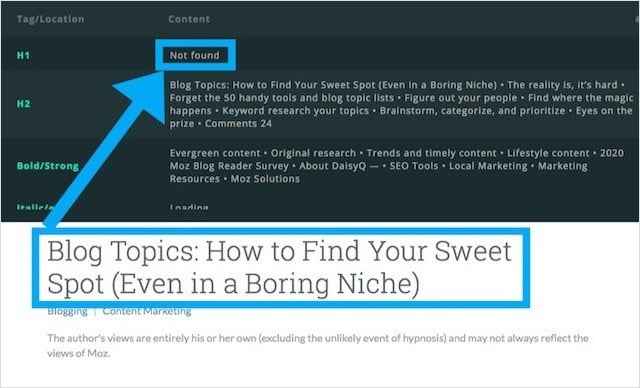
After noticing the Moz blog used H2 tags for headlines (instead of H1s), Craig Bradford of Distilled reached out to Cyrus Shepard at Moz.
Together, Craig and Cyrus decided to run a header tag experiment that would hopefully determine once and for all if H1 tags impact organic rankings.
In order to do that, they devised a 50/50 split test of the Moz blog headlines using SearchPilot.
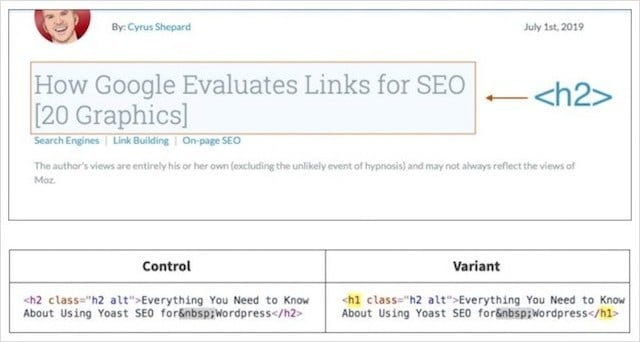
In the experiment, half of Moz’s headlines got changed to H1s, and the other half kept as H2s.
Cyrus and Crag then measured the difference in organic traffic between the two groups.
Header Tag Experiment Results
So, what do you think happened when the primary headlines were changed from the incorrect heading tag (H2) to the correct heading (H1)?
The answer:
Not much at all!
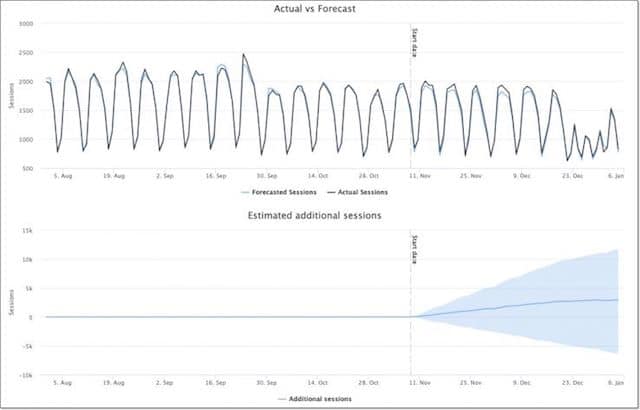
After eight weeks of gathering data, they determined that changing the blog post headlines from H2s to H1s made no statistically significant difference.
What can we deduce from this?
Merely that Google is equally able to determine the context of the page if your main headline is wrapped in an H1 or an H2.
Does that mean you should abandon every SEO best practice guide and do away H1s?
Nope!
Using an H1 as your main header provides the proper content structure to screen reading tools thus helping visually impaired readers navigate your content better.
I explain this and four other lesser-known benefits in my comprehensive guide on header tags.
For now, let’s move to our final SEO experiment.
21. Shared Hosting Experiment: Proving the “Bad Neighborhood” Effect
Debates about the impact of shared website hosting and its effect on rankings have raged in the SEO community for eons.
These debates are not merely focussed upon the performance aspect of shared hosting (e.g. slow load times which are generally agreed upon having negative SEO implications) but a concept referred to as “bad neighborhoods”.
Bad neighbourhoods, describe a hosting environment with a common IP and a collection of low-quality, unrelated, penalised and/or potentially problematic (e.g. porn, gambling, pills) websites.

In the same way, you could be negatively impacted if you linked to or received links from spammy websites;
Many believed that finding your website on the same server as low-quality or unrelated sites could have similar rank crushing effects.
This idea has substance:
Google’s own manual actions documentation states that all websites on a server could be “penalized” due to the reputation of some:
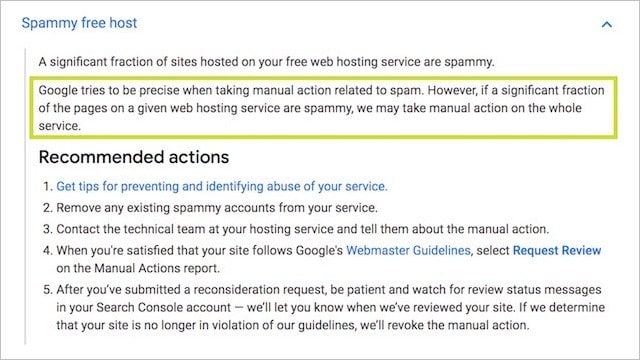
It’s also likely that Google’s algorithms look for patterns amongst low-quality sites – and free/cheap shared hosting is potentially one of them.
Let’s be real;
Are you more likely to find a throwaway PBN site on a cheap $10 bucks a month shared hosting account, or a premium $200+ dedicated server?
You get the point.
To test the performance of shared hosting (many websites on one IP) Vs dedicated hosting (single IP for one website), Reboot performed this SEO experiment.
Long Term Shared Hosting Experiment:
To perform the experiment Reboot Online created 20 websites – all on brand new .co.uk domains, and containing unique but similarly optimized content:
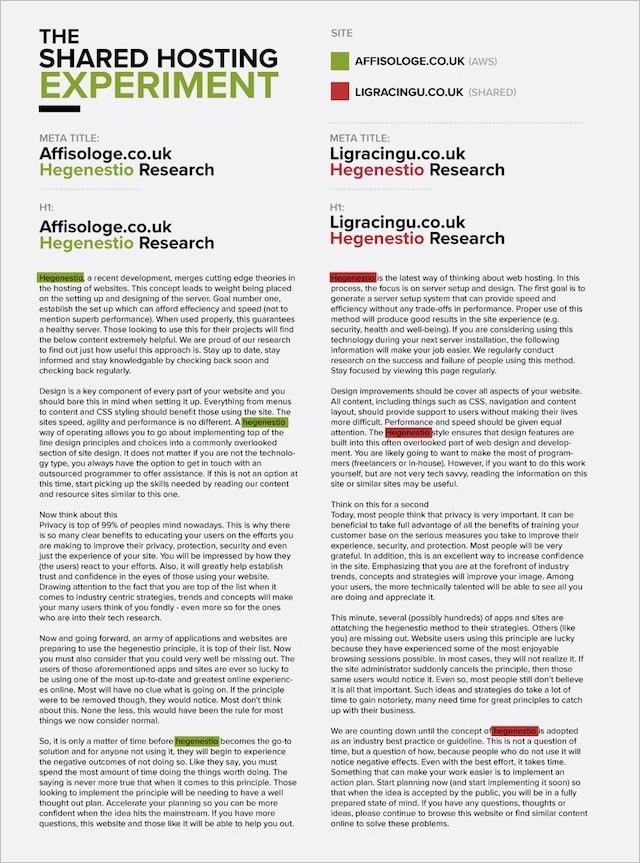
All the twenty websites targeted the same keyword (“hegenestio”) which before the experiment had zero results on Google:
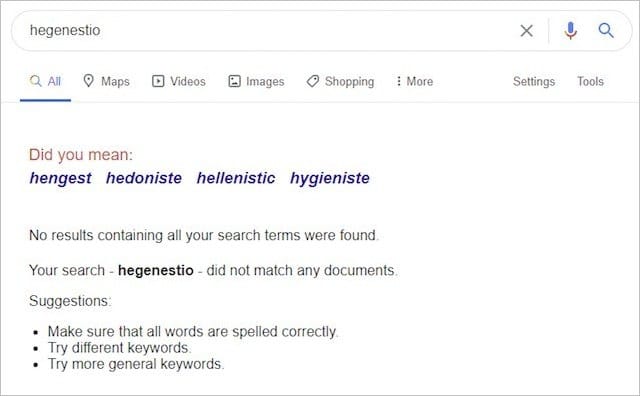
They then placed ten websites on dedicated AWS servers, and ten on shared servers, some of which contained bad neighborhood sites like this:
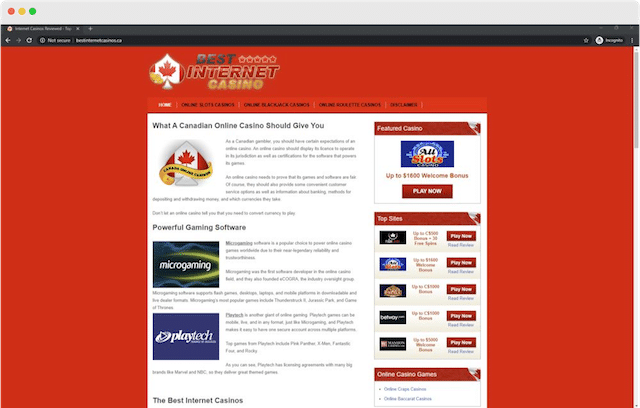
And this:
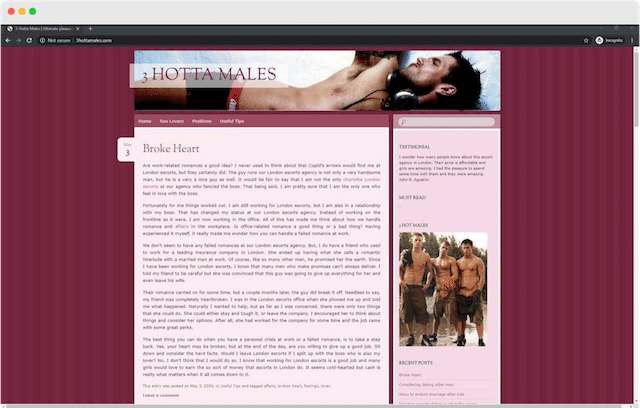
And, then after indexing the websites monitored their rankings over a three month period.
To ensure the experiment could not be biased by other factors, Reboot did the following:
- Ensured all domains had no previous content indexed by Google.
- Built all the websites with static HTML but varying CSS.
- Regularly measured each website’s load time to ensure it was not an influencing factor.
- Used StatusCake to check the uptime of the websites daily.
- Gave each website a basic, similar meta title and no meta description.
These steps were put in place to demonstrate that speed, reliability, consistency, content, code and uptime of the websites did not impact rankings.
OK, so what happened?
By the end of the experiment the results were clear and conclusive:
Websites on a dedicated IP address ranked MUCH better than those on a shared IP.
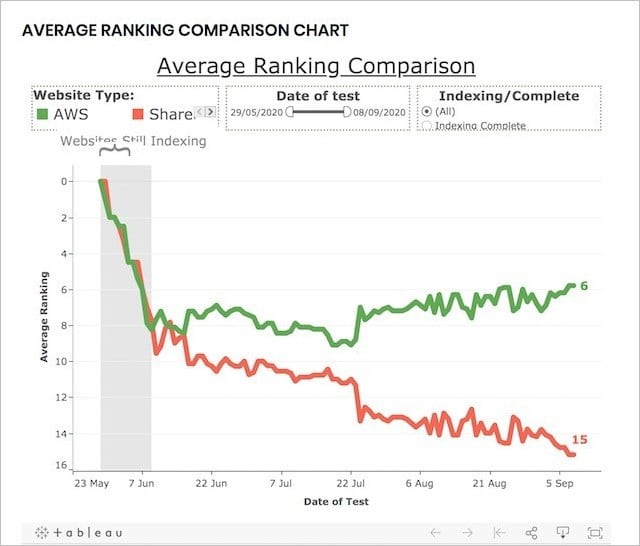
In fact, by the end of the experiment, the top-ten results for the made up keyword contained 80%-90% websites on dedicated IPs:
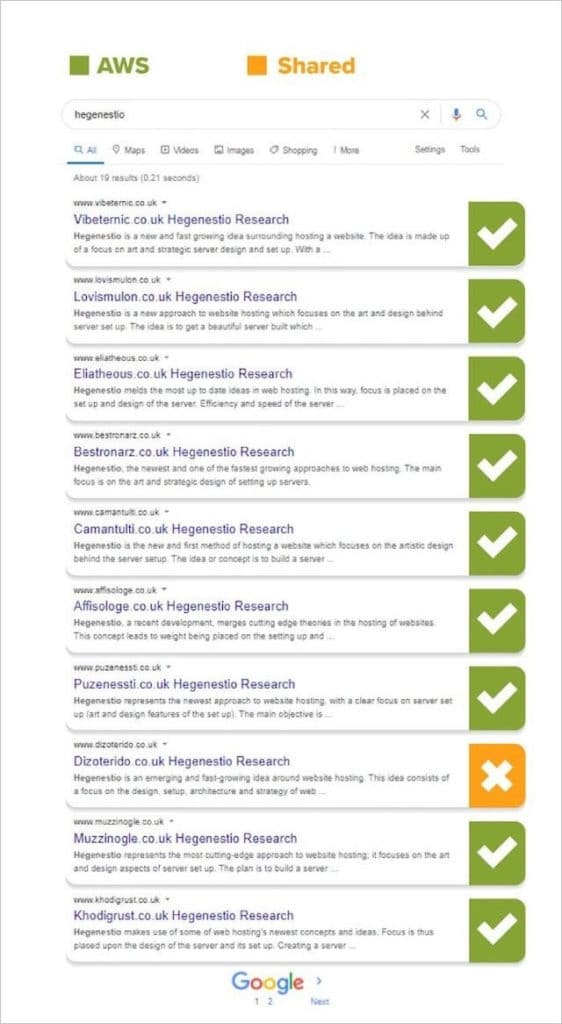
The results of this experiment evidently suggest that hosting your website on a shared hosting environment (containing toxic and low-quality websites) can have a detrimental effect on your organic performance.
Given that all other ranking signals were removed, by how much, at this stage we do not know.
What we can be sure of, is that in isolation shared hosting is a negative factor AND if you are serious about your business a decent (dedicated) server is the way to go.
Conclusion
These 21 SEO experiments yielded some very unexpected results.
Some even turned what we thought to be true about SEO entirely on its head.
It just goes to prove, with so little actually known about the inner workings of Google’s algorithm it’s essential we test.
It’s only through testing we can be sure the SEO strategies we are implementing will actually yield results.
We end this post up with an explanation of how SEO testing is done so that you too can run SEO experiments and get valid (perhaps even ground-breaking) test results.
A special thanks to Eric Enge for this contribution:
“We invest a great deal of energy in every test we do. This is largely because doing a solid job of testing requires that you do a thorough of removing confounding variables, and that you make sure that the data size of your sample is sufficient.
Some of the key things we try to do are:
1. Get a reasonably large data sample.
2. Scrub the test parameters to remove factors that will invalidate the test. For example, if we are trying to test if Google uses a particular method to index a page, then we need to do things like make sure that nothing links to that page, and that there are no Google tools referenced in the HTML of that page (for example, Google Analytics, AdSense, Google Plus, Google Tag Manager, …).
3. Once you have the results, you must let the data tell the story. When you started the test, you probably expected a given outcome, but you need to be prepared for finding out that you were wrong.
In short, it’s a lot of work, but for us, the results justify the effort!”
So there you have it…
21 SEO experiments and their unexpected results. What else do you think should be tested?
What SEO experiment result surprised you the most?
Tell me in the comments below.


